
Two brothers fighting to the death with machetes. Families fighting to take possession of a water well. A group of indigenous people battling Spanish colonizers. In each of these conflicts, a little mare appeared as a savior, surviving to this day as a legend in several towns in Central America.
The Dance of the Yegüita (the little mare) is a very important tradition for the community of Nicoya, but also for different towns in the region.
What do the different versions of this dance have in common and what differences are there?
The Nicoyan Dance
First, let’s do a brief review of the history of Nicoya’s Dance of the Yegüita.
According to oral tradition, near the hill of La Cruz, towards Curime, two indigenous brothers began to fight with machetes. When people returning from mass in Nicoya saw the fight, they asked the Virgin of Guadalupe to intervene to stop the confrontation. Then a mare suddenly appeared. Kicking and biting, she forced the brothers to separate and then disappeared.
The Nicoyan people attributed that miracle to the Virgin and that’s why they commemorate what happened that day with a dance on December 11 and 12. A person dresses up to represent the little mare with a structure that has a wooden head, a structure of vines, cloth surrounding it and a tail made from fique fiber.
Another person carries a wooden doll and both dance to drum and ocarina (a type of vessel flute) music in front of the Virgin of Guadalupe in a procession that goes through the streets of downtown Nicoya.
If we cross the San Juan River, which separates Costa Rica from Nicaragua, we can come across several communities that also have a pacifist mare in their celebrations.
The Mares of Nicaragua
About 100 kilometers (about 60 miles) from the border, the town of San Juan de Oriente, in the department of Masaya, celebrates La Yegüita or La Demanda (the demand).
It’s a festival in honor of the patron saint, John the Baptist, every June 24th, during which the people ask to be healed of an illness or pay for a favor received through the image of that saint.
According to the Catalog of Traditional Dances of Nicaragua’s Pacific, the origin of this dance revolves around a mare that was lost or stolen but that reappears after a confrontation between people.
Currently there is a main character who wears a frame very similar to Nicoya’s. The mare interferes when people are hitting each other with sticks or “swords” made from vines and, despite getting hurt, they claim that the saint protects them from any wound.
The fighting ends when the little mare, who is considered the highest authority, interferes in the duel.
As in the yegüita of Nicoya, the tradition is set to music with a wind instrument, in this case the tatil (a whistle made from a long reed) and the tancún (small drum). Currently, during this dance, bands also play, performing “bull sounds,” similar to parrandera or cimarrona bands.
A little farther south, the community of Diría in the department of Granada has a tradition that is practically the same but in honor of Sain Peter, which they celebrate on June 29 and 30.
Since colonial times, devout people have asked for it to rain to obtain good harvests and to prevent disasters from being unleashed.
During the festival, they prepare indigenous food and distribute it for free to everyone present. Before starting the festival, the landlords and stewards erect structures of entwined branches with roofs made of palm branches, decorated with arches loaded with fruit.
In Diriá, the people who participate also lash at their bodies with “sword jabs.” The battle only ends when the little mare, the dance’s main character, appears and separates the couples who obey and respect her decision.
Those who have attended Nicoya’ celebrations may find these Nicaraguan practices very violent, but a few decades ago, they weren’t so different from each other.
The Ensartada
Until the turn of the century, people in Nicoya had the custom of resolving their differences during the Festival of the Virgin of Guadalupe. Any trouble that had existed during the year between two people was resolved through lashings between the parties involved. This practice was called “la ensartada” (possibly meaning the skewering).
This was described by American archaeologist Doris Stone in her article “Notes on the Festival of the Virgin of Guadalupe” in the year 1954.
Perhaps the most important function of the mare is when she takes part as a kind of town judge,” she described.
Oral tradition says that these whips were made of leather from tapirs and the phrase “pa’ la Lupe nos vemos” (we’ll see each other for the Lupe, short for Guadalupe) was a phrase that declared an eventual confrontation during the Virgin’s festivities.
Stone explained that this ended when the Costa Rican government forced the people to give up that tradition at the end of the 19th century, because people ended up injured and “to enforce national laws.”
The solution proposed by the priest José María Velazco in 1914 was to replace this confrontation with the tiny image called “La Niña” (The Girl), but popularly known as “La Muñeca” (The Doll). This figure represents the indigenous community that prayed for the miracle to happen.
According to Nicoyan researcher Mario Rojas, in 2014, the people of Nicoya celebrated 100 years of the tradition of “La Muñeca.”
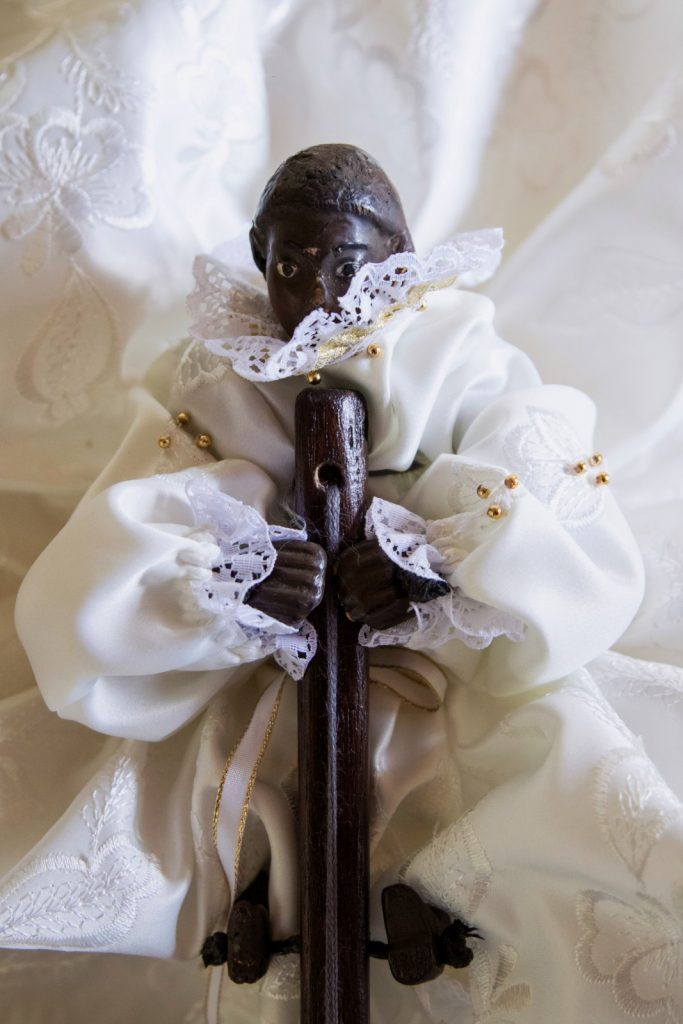
La Niña or La Muñeca is a miniature representation of the indigenous community that was built in 1914 and is the same one that is still danced to this day.Photo: César Arroyo
The Mares of El Salvador
In the municipalities in the east of El Salvador, this dance is linked to the indigenous Lenca people.
In the town of Chilanga, the origin of this tradition comes from a dispute over water between two families who got their water supply from the same well. Over the years, the number of people in each family grew until they became two very powerful tribes and the idea of taking over the well also grew.
Until one day, when the two chiefs decided to confront each other, each with two clubs. In the middle of the fight, a Spanish knight appeared and threw his horse between them to separate them. The chiefs explained to him the reason for the fight and the knight thought that getting into this situation wasn’t necessary, but instead they should ration the water and use the well suitably so that they wouldn’t lack water.
In the dance in memory of that situation, four indigenous people dance around the little mare with clubs in their hands and it ends in a dramatization of the fight until the little mare intervenes.
As in Nicoya and Nicaragua, the whistle (or ocarina) and the drum provide harmony for the tradition. The yegüita is also danced on special occasions such as a birth, a wedding, a tribute to the saints that they venerate, when sowing or to ask for rain and harvests.
In another town called Guatajiagua, the dance arose from one of many battles of the indigenous peoples in resistance against the Spanish. When the conquerors fled from the confrontation, they left a mare abandoned. The indigenous people took it as a kind of victory trophy and created a dance around it.
The Mulita and the Chinegros
Although these two traditions aren’t called the dance of the yegüita, they have several similarities with the Nicoyan dance.
Within the Boruca indigenous territory in the southern part of the country, they preserve a tradition in which a figure similar to the little mare also participates during a dance. This dance, known as “Fiesta de los Negritos (festival of the little blacks) or “La Mulita” (the little mule), is celebrated around December 8, the day of the Conception of Mary, patron saint of Boruca.
According to the book Nuestra música y danzas tradicionales (Our Traditional Music and Dances), which talks about the different Central American cultural expressions, the origin of this tradition dates back to colonization, when contact occurred between indigenous people and African descendants.
The main character wears the mule costume, which is very similar to Nicoya’s mare, and is accompanied by musicians, who play the whistle, the recorder or the accordion, and a drum. Meanwhile, people dance with their faces smeared or colored black.
The group leaves the house of the person representing the mule and walks through the town’s streets, dancing and singing.
In Nicaragua, there’s a tradition very similar to the Mulita: Los Chinegros of Nindirí in Masaya.
This tradition is celebrated on July 26 in honor of Santa Ana. It generally involves 10 people: The Captain, six black people (represented by people with painted faces), the Caballerizo (groom or stable hand), who is the one who plays the little mare, and the musicians.
As in the other dances of the yegüita, the Chinegros hit each other with pieces of wood like rulers called “rajas” and the fight stops when the yegüita stands in front of them.
The book that compiles Nicaraguan dances explains that “about the origin and meaning of these dances, there are only assumptions and conjectures,” but it affirms that they are related to celebrations of the patron saint of Spain: Saint James, the apostle.
One Possible Origin
The legend that made James a very important part of the Spanish national identity came about during a battle known as “the battle of Clavijo” in the year 844, in the middle of the Muslim conquest of Spanish territory.
One day before going to the battlefield, the apostle James appeared in a dream to King Ramiro I and told him to invoke him during the confrontation.
Just when the “Moors” were on the verge of defeating the Christians, James appeared on a white horse and killed thousands of Moors with his sword and won the battle.
The root of all of these legends is the same: someone asks for divine intervention to end a confrontation, suddenly a figure appears on an equine (a horse or a little mare) and provides a resolution.
In her notes on the Nicoya tradition in 1954, archaeologist Doris Stone makes a link between all of these traditions and Spain.
“There is no doubt that the idea of the yegüita came from the Spanish. In the mother country, the idea of the little horse is still part of the celebrations in religious festivals. The American people, however, no longer recognize the little horse’s association with Spain, and its appearance today is a matter of local interpretation.”
Costa Rican historian Soledad Hernández believes that more research on this tradition is needed in a more regional way.
There’s no document, a comparative analysis in a transregional perspective for the dance of the yegüita. That task is pending,” she said.


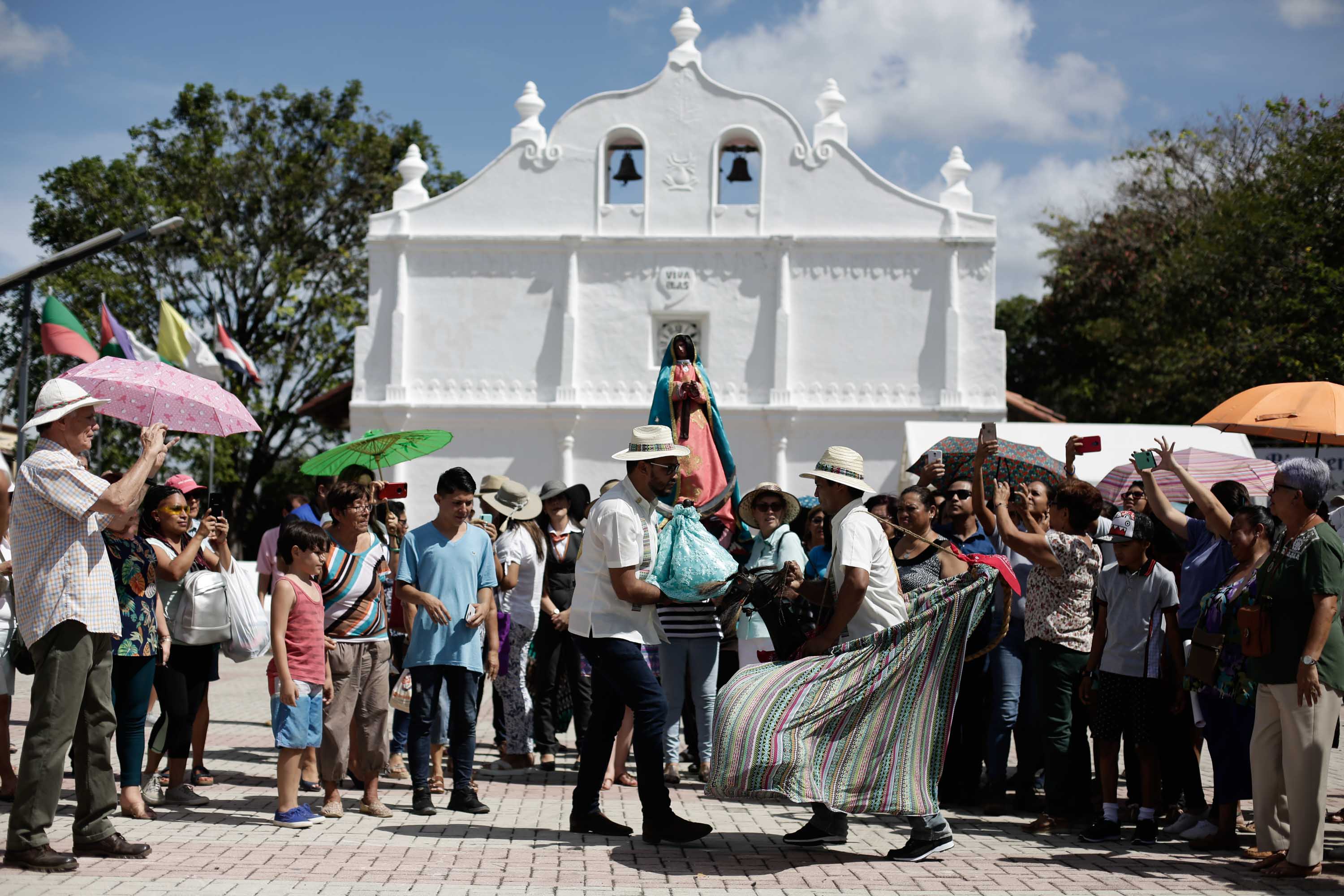
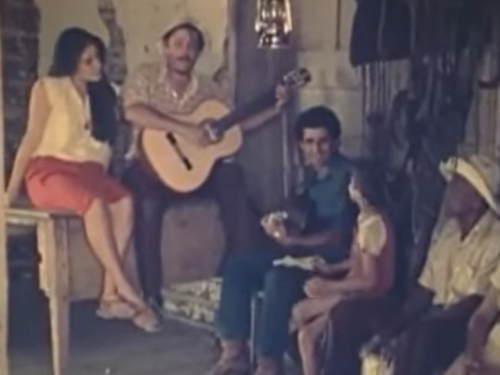
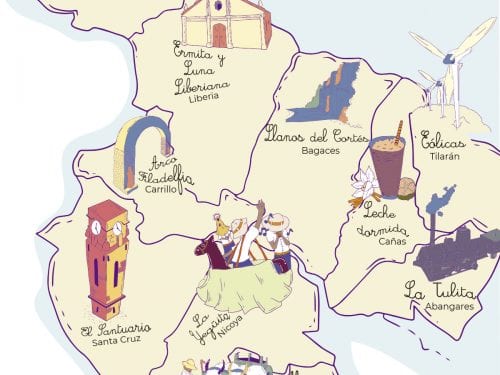
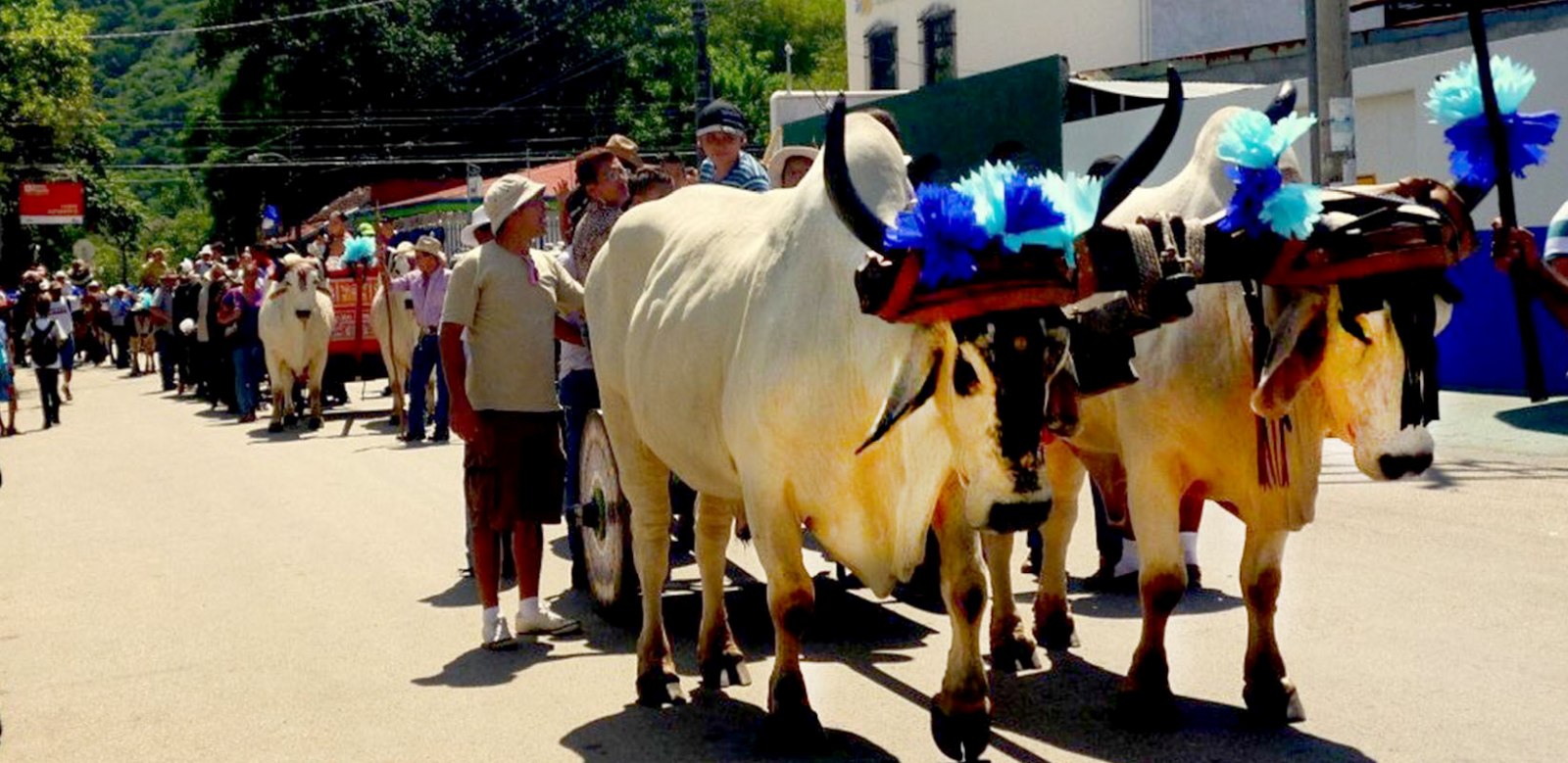

Comments